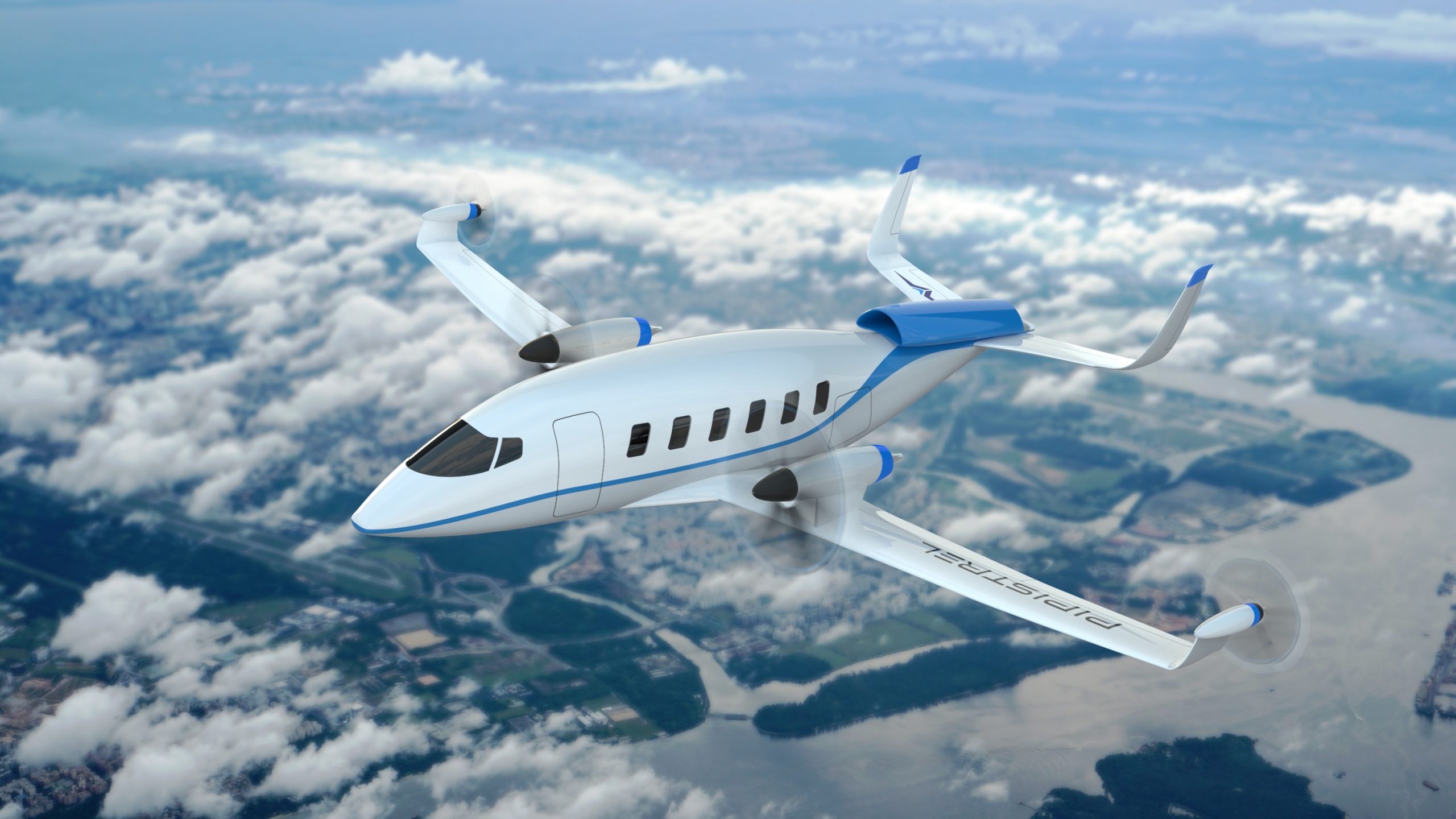 Pipistrel PVRK-1 Miniliner concept. Foto: Pipistrel
Pipistrel PVRK-1 Miniliner concept. Foto: Pipistrel
Aviation is at the center of the climate debate. An international study by the International Energy Agency (IEA) shows that flying is responsible for around 2 percent of global CO2 emissions. Despite temporary declines due to the coronavirus crisis, air traffic remains one of the fastest-growing transport sectors, which highlights the urgent need for action on its environmental impact. Aviation is therefore called upon to actively contribute to achieving the climate neutrality targets set out in the European Green Deal by 2050.
A shift from conventional fossil fuel-based propulsion systems to electric propulsion solutions is also taking place in aviation. The aim is to increase energy efficiency and switch to renewable energy sources in order to minimize the environmental impact of the next generation of aircraft – all the way to the complete decarbonization of air traffic. The AIT Austrian Institute of Technology is supporting this development by providing technological solutions for hybrid electric aircraft.
Energy storage systems that meet the requirements of aeronautics play a central role in the electrification of aircraft. This requires batteries with a high energy density that also meet the highest safety standards. Innovative solid-state batteries made of active materials with high energy density and solid, non-flammable electrolyte have these properties. Solid-state batteries are currently being developed mainly for automotive applications, but their actual market launch is not expected for several years.
A promising approach is now being pursued by a European consortium led by AIT in the MATISSE project, which is being funded by the European Commission as part of Horizon Europe. The aim is to develop multifunctional structural components with an integrated semi-solid-state battery for aeronautical applications in order to make solid-state batteries a viable technology for the next generation of (hybrid) electric aircraft.
MATISSE aims to develop a demonstrator for multifunctional structures with novel properties: from energy storage and efficient energy management to comprehensive safety monitoring. This demonstrator will be installed as a complete wingtip on a Pipistrel Velis Electro aircraft and comprises a module with 40 battery cells at 72 V DC. To qualify the technology to TRL 4, the demonstrator will undergo an extensive testing and characterization campaign, which is expected to be completed by the end of the project in 2025. MATISSE will also cover aspects related to flight certification, lifecycle sustainability and virtual scale-up, paving the way for the application of structural batteries as a key technology with improved performance for the next generation of hybrid electric aircraft for mass transit and regional transportation.
Dr. Helmut Kühnelt, researcher at AIT and MATISSE coordinator, emphasizes: “The road to climate-neutral aviation is only just beginning. As with the previous SOLIFLY project, with MATISSE we want to support the European aviation industry in the spirit of the Green Deal with pioneering battery technologies to launch hybrid-electric short and medium-haul aircraft and thus make a significant contribution to achieving the Paris climate targets.